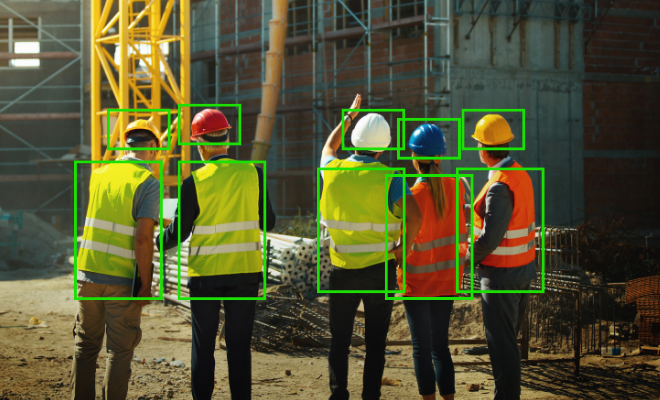In today’s rapidly evolving industrial and construction environments, workplace safety is more critical than ever. One of the fundamental aspects of maintaining a safe working environment is ensuring that all personnel comply with Personal Protective Equipment (PPE) requirements. PPE such as helmets, gloves, masks, and high-visibility vests are vital safeguards against injuries and accidents. However, enforcing PPE compliance across sprawling sites and diverse teams remains a persistent challenge.
Enter PPE Detection technology—a sophisticated, AI-driven approach that automates the monitoring of safety gear compliance in real time. This innovative technology leverages computer vision and video analytics to identify whether workers are wearing appropriate protective equipment and sends instant alerts when violations occur. By integrating PPE Detection into workplace safety protocols, companies can dramatically reduce risks, enhance regulatory compliance, and foster a culture of safety.
The Growing Need for Automated PPE Monitoring
Manual inspections and supervisor-led safety checks have long been the standard practice for PPE compliance. However, these methods are inherently limited by human error, inconsistency, and the sheer scale of industrial sites. Supervisors cannot continuously monitor every individual, especially in large, complex, or hazardous environments where multiple activities occur simultaneously.
This gap in monitoring can lead to lapses in PPE usage, increasing the likelihood of accidents, injuries, and even fatalities. Furthermore, regulatory bodies around the world are tightening safety standards, requiring more rigorous compliance and documentation. Failure to meet these standards can result in heavy fines, legal repercussions, and damage to a company’s reputation.
PPE Detection technology provides a comprehensive solution to these challenges. It operates around the clock, ensuring constant vigilance without the limitations of manual oversight. The system’s ability to detect non-compliance instantly allows for immediate corrective action, reducing the window of risk significantly.
How PPE Detection Technology Works
At its core, PPE Detection uses advanced camera systems paired with artificial intelligence to analyze live video feeds. These systems are trained to recognize various types of protective equipment, from helmets and face masks to gloves and safety vests. The technology can distinguish between compliant and non-compliant behavior, even in dynamic, real-world environments.
When a worker enters a monitored area, the system scans and verifies their PPE status. If a required piece of equipment is missing or improperly worn, the system triggers an alert. This alert can be sent directly to safety supervisors, site managers, or integrated into broader safety management platforms.
The use of AI and machine learning enhances the accuracy of PPE Detection systems, reducing false alarms and ensuring reliable identification across different lighting, angles, and environmental conditions. Over time, the system can learn from new scenarios, further refining its detection capabilities.

Enhancing Workplace Safety and Compliance
The implementation of PPE Detection technology fundamentally changes the way safety compliance is managed. By automating the process, organizations can ensure that no violation goes unnoticed. This heightened level of monitoring fosters a culture of accountability, encouraging workers to consistently adhere to safety protocols.
Moreover, the data collected by PPE Detection systems offers invaluable insights. Safety teams can analyze trends such as frequent types of non-compliance, high-risk zones, and time periods when violations occur most often. This data-driven approach allows for targeted interventions, such as focused training sessions or strategic placement of safety officers.
From a regulatory perspective, automated PPE Detection provides robust evidence of compliance. Detailed logs and video records help organizations demonstrate their commitment to workplace safety during audits or investigations. This documentation can be crucial for mitigating liabilities and ensuring that safety standards are met continuously.
Reducing Risk Through Proactive Intervention
One of the most significant benefits of PPE Detection is its ability to reduce risk proactively. Traditional safety management often reacts to incidents after they occur. In contrast, PPE Detection enables preventive action by identifying non-compliance before it leads to accidents.
For instance, in environments where head injuries are a major hazard, detecting and correcting missing helmets immediately can prevent serious harm. Similarly, in areas where respiratory protection is essential, ensuring that masks are worn correctly reduces exposure to harmful dust or chemicals.
This proactive risk reduction not only protects workers but also benefits the organization by minimizing downtime, medical costs, and compensation claims. Enhanced safety records improve employee morale and can positively impact operational efficiency and productivity.
Conclusion
PPE Detection technology marks a new era in workplace safety compliance, shifting the paradigm from manual, reactive oversight to automated, proactive risk management. By harnessing AI-driven video analytics, organizations can ensure consistent PPE adherence, reduce accidents, and comply with stringent safety regulations.
Beyond improving individual safety, PPE Detection empowers companies with actionable insights, enabling smarter decisions and fostering a culture where safety is a shared responsibility. In high-risk industries and complex environments, this technology is no longer optional—it is essential for protecting lives and maintaining operational integrity.
Incorporating PPE Detection into safety protocols not only mitigates risk but also demonstrates a company’s commitment to the well-being of its workforce. As technology evolves, PPE Detection will continue to play a critical role in building safer workplaces for the future.

